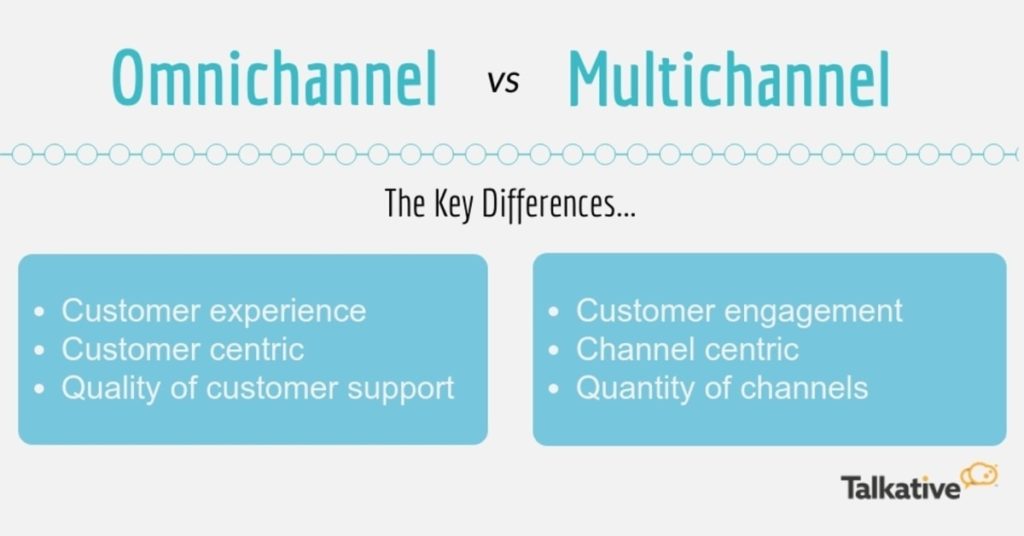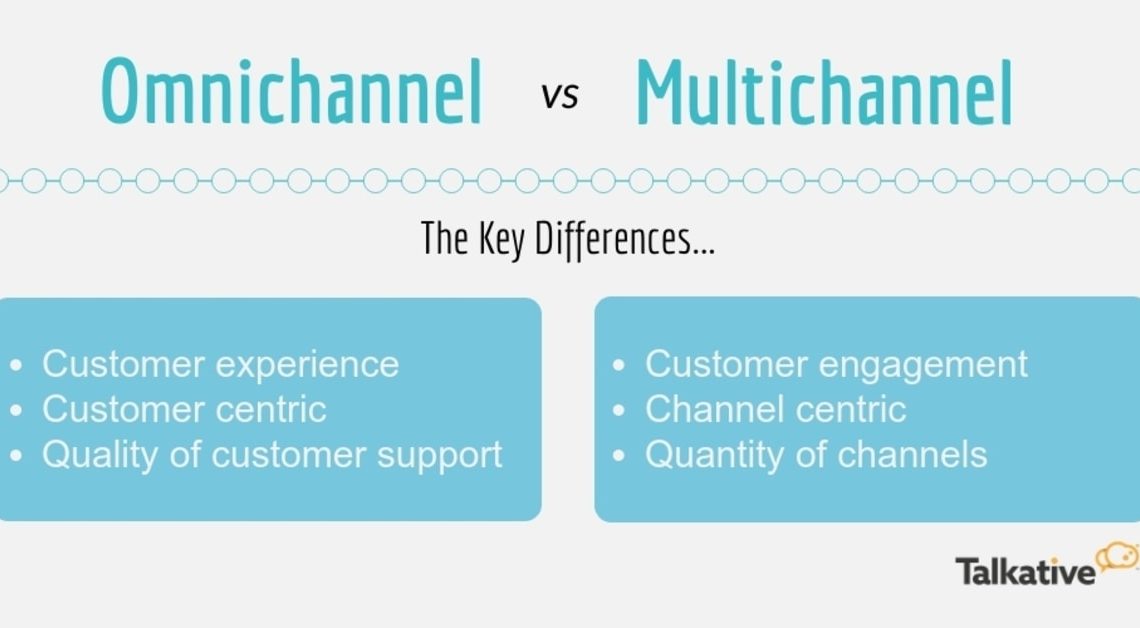
Building relationships with people in your personal life is similar to reaching your clients with the appropriate message at the appropriate time through the appropriate channel. It’s important to respect your customers’ interests and adapt to their preferences if you want to build a trusted relationship with your business across all channels.
Here, omnichannel and multichannel marketing may both be useful.
What Sets Omnichannel Apart from Multichannel Marketing?
The terms “omnichannel” and “multichannel” have similar sounds and are frequently used in the marketing and eCommerce fields. Both terms refer to using more than one communication channel or modality to reach your target.
Many is denoted by the prefix “multi,” while all is denoted by the prefix “omni.” This tiny linguistic cue highlights the crucial distinction between omnichannel and multichannel messaging.
Multichannel marketing: An understanding
Multichannel messaging is the practise of promoting your products or communicating with customers across a variety of communication channels, including smartphone push notifications, email, SMS, and web push notifications.
To guarantee that your messages are heard in all of these diverse locations, multichannel marketing engages consumers across a variety of platforms and gadgets. To compete and meet client expectations in 2021, it will be crucial to use a variety of channels.
Each channel in this message strategy stands for a distinct encounter. In other words, how a person engages with one channel has little bearing on how you engage with them through other channels. Maximizing the value of each channel separately is the main goal of multichannel marketing. These channels are frequently handled differently by several teams, depending on the system. For instance, your business might email, SMS, and push notifications to customers offering a 20% discount.
Marketing across multiple channels helps improve message visibility. A multichannel strategy aims to reach as many customers as possible in order to increase engagement. It’s a volume-based strategy where the emphasis is on adding channels and messaging. This strategy ensures that you interact with your clients through their preferred channel.
Learning about Omnichannel Marketing
An omnichannel marketing strategy unifies communication across all client touchpoints and sees each channel contact as a part of one bigger conversation, in contrast to multichannel messaging, which can be fragmented for both the customer and the marketer. This strategy aims to develop a more dynamic, individual, and cohesive customer journey.
Creating a Consistent and Seamless Customer Experience
Customer experiences become more integrated and cohesive as a result of unified communications. When you use an omnichannel strategy, all of your channels work together to direct clients toward making a purchase.
A genuine omnichannel strategy, however, involves more than just providing a consistent digital experience across channels. Incorporating these linked channels into a trip requires making use of the wealth of data that exists throughout your IT stack.
For instance, using a multichannel strategy, your delivery software may email, push, and SMS the same chicken sandwich promotion to all consumers, even vegetarians. Customers who have previously ordered chicken nuggets from your app might see the promotion as a mobile push notification and an in-app message if you take an omnichannel approach. After customers place an order through the app, you might email them a receipt and send them a mobile push notification with real-time delivery information. This omnichannel strategy adapts messaging to user choices and contributes to the development of a seamless user experience across various digital touchpoints.
That said, having the appropriate message automation technologies and a centralised customer data source makes it simpler to implement an omnichannel messaging strategy.
You could accomplish this through connectors, but it’s simpler to choose a messaging solution that enables you to control numerous channels from a single platform and streamline your IT stack. AI messaging capabilities, such as those used for cross-channel retargeting, might be useful for putting your omnichannel strategy into practise.
Omnichannel: Strengthening Customer Relationships
Keep in mind that every small encounter you have with your clients strengthens the bond you have with them.
An omnichannel strategy can help you achieve your goal of giving customers a seamless and connected customer experience that directly addresses their unique needs and preferences, according to a growing body of research showing that consumers see their interactions with brands as human relationships.
Effective Workplace Omnichannel Messaging
An omnichannel marketing strategy is used by the well-known fast-casual restaurant Shake Shake to market local products and provide a smooth consumer experience throughout their app, website, and Shack locations. Find out more about their messaging approach and how they’ve surpassed their rivals.
